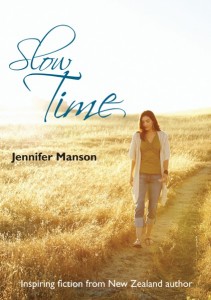Who we are, what we do, what we say shapes the world around us. Every pound or dollar we spend feeds someone and starves someone else, through our choices of where to spend, and what to buy. Are we supporting someone who loves their work and their place in the world, or encouraging someone to stay where they are when they would be better to move to something else?
The modern world is about infinite choice and immediate feedback. The cross-section of “likes” on a Facebook post tells us vast amounts about the landscape of our world and our place in it; what we “like” is a feedback loop that shapes what we see. The way we move through a crowded street impacts the way the people we brush against spend the rest of their day; fully, deeply connecting with our family and friends shapes the quality of their lives, and ours.
My working world has been, till now, a world of books; but with the exploration of the last week, a new vista is opening. My work is all about message – my own and my clients’ – and getting that message out into the world. That isn’t changing. The medium, however, is more fluid than it was.
The timescales involved for getting a book written and out into the world, read and integrated and responded to make books a specialised endeavour. They make sense as part of a total package, a body of work with depth and breadth; for immediate impact, however, our choices are wide open: YouTube, blog, social media, conversation, live speaking, workshops, radio interviews, television. If your message is important, then let’s get it out as fast and as clear (and often, as brief) as we can.
I started doing my video writing blog because my publicist suggested blogging more regularly. It seemed to me that blogging daily would mean I did less of my “serious” writing, so I chose video instead. The first few were awful. Then I got a little better. Now, when I look into my handheld iPhone, wherever I happen to be, I sink into a place of connection, look into the lens and let go. I talk about what’s happening, in my work and my life. Life. For me, it’s about taking a snapshot and revealing life, truth, in a soundbite, short but real.
This isn’t stuff that would make it into a novel or a self-help book – not without being refined beyond recognition. It’s immediate, about struggling mid-process, or responding to something in the moment. And in the background, the message of my approach to life comes through – the essence of who I am. Regardless of what I say, that truth comes through.
We might be less guarded, less thoughtful, when we dash off a Facebook comment or a tweet than we would be writing a book. In fact that doesn’t matter. What matters is, do we care, are we loving, do our actions match our words?
In this immediate life, our thoughts are read by those around us; who we are is what shapes our world.


